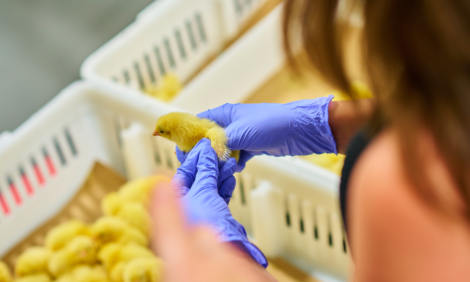



Avian Intestinal Spirochaetosis in Layers - Spirochaete Survival
By David G S Burch, BVetMed MRCVS, Veterinarian, Octagon Services Ltd. Historically, there have been reports of laying flocks with increased levels of soft brown to frothy liquid caecal droppings, not achieving their peak-laying potential and then underperforming for the rest of the laying period.After the major infectious culprits have been ruled out, eg viruses, mycoplasmas and, in the case of free-range hens, worms and coccidiosis, attention must turn to other potential causes. Spirochaetes (microscopic spiral-shaped bacteria) have been commonly found in the caeca and droppings of hens but their significance was difficult to determine as they could also be found in birds exhibiting normal production.
The breakthrough occurred in the late nineties when researchers were able to distinguish between the different Brachyspira species and the effects they had on layer production. Brachyspira innocens, as its name suggests, is not associated with disease and is commonly found in the hen. Brachyspira pilosicoli and B. intermedia, are considered pathogenic (disease causing) and can cause depression of egg production of 5-6% and 10-12% respectively. They can also cause poor hen bodyweight and increased mortality if left untreated.
In surveys, the pathogenic spirochaetes have been found in about 30% of laying flocks, but recently in a small survey of UK free-range flocks, they were found in 70% of flocks with poor performance, often compounded with other infectious agents. Differential diagnosis is critical and can be quite difficult. Brachyspira grow slowly and faecal culture and biochemical typing takes about 10-14 days to get a result. There is a rapid PCR test for pigs, which looks for the different bacterial DNAs, which is carried out in SAC Edinburgh, but this has not been adapted to a poultry-specific test yet, due to procedural difficulties. Urgent work is required here, as the test only takes 24 hours.
Usually, control has been with medication, in particular tiamulin, which is specifically used for spirochaetes in pigs but also approved for use against mycoplasmas in poultry and, fortunately, has a zero withdrawal period for eggs. Since the regular use of chlortetracycline in feed for layers has stopped, it has been reported that there may be a higher incidence of spirochaetosis cases, so it suggests that chlortetracycline also has some preventive activity. Hygiene is also critical to its control. In cage sheds, thorough cleaning and disinfection between flocks is very effective in reducing the incidence. The difficulty comes in free-range flocks on fixed paddocks. Both B. intermedia and B. pilosicoli are meant to survive in faeces for only upto 3.5 days (Phillips and others, 2003), even in cold weather (see Graph 1), however re-infection usually occurs 3-4 weeks after treatment and we are currently investigating solutions to this problem. Paddock management is very important, e.g. to eliminate puddles/damp patches etc but more work is required in this area. Wild birds, rodents and flies may also be sources of reinfection.
Graph 1. Survival of B. intermedia and B. pilosicoli in faeces at different temperatures

(after Phillips and others, 2003)
Pathogenic spirochaetes appear to be widespread in the UK layer population and particularly in free-range flocks, where biosecurity is difficult. There is effective treatment available but further work is required to improve our diagnostic capabilities, our knowledge of the pathogenesis of the disease, the organism's survivability and paddock management to improve its detection and control.
References:
Phillips, N.D., La, T. and Hampson, D.J. (2003) Survival of intestinal spirochaete strains from chickens in the presence of disinfectants and in faeces held at different temperatures. Avian Pathology 32, 6, 639-643
January 2007
First Published in "Poultry Forum" January/February edition 2007.









